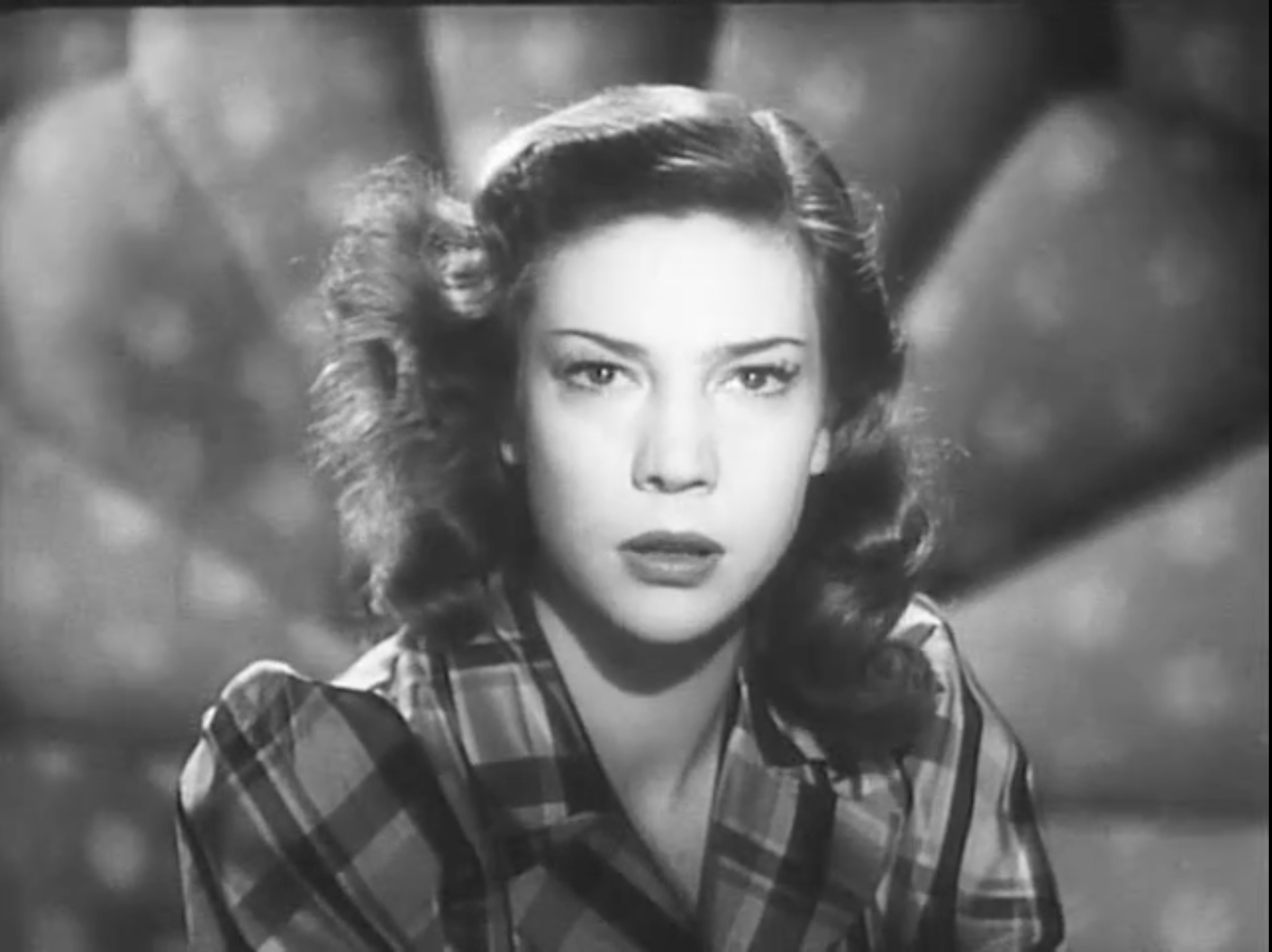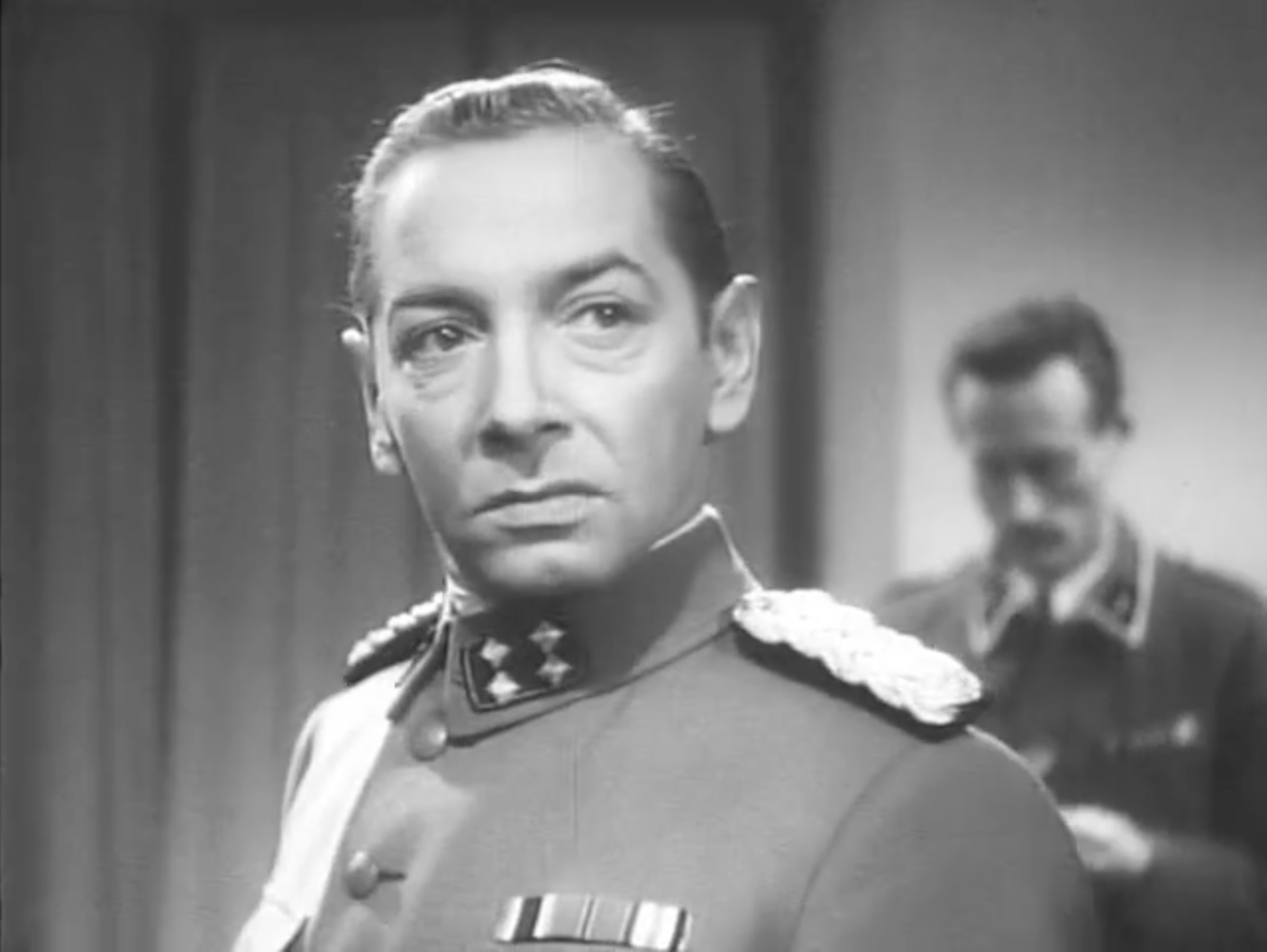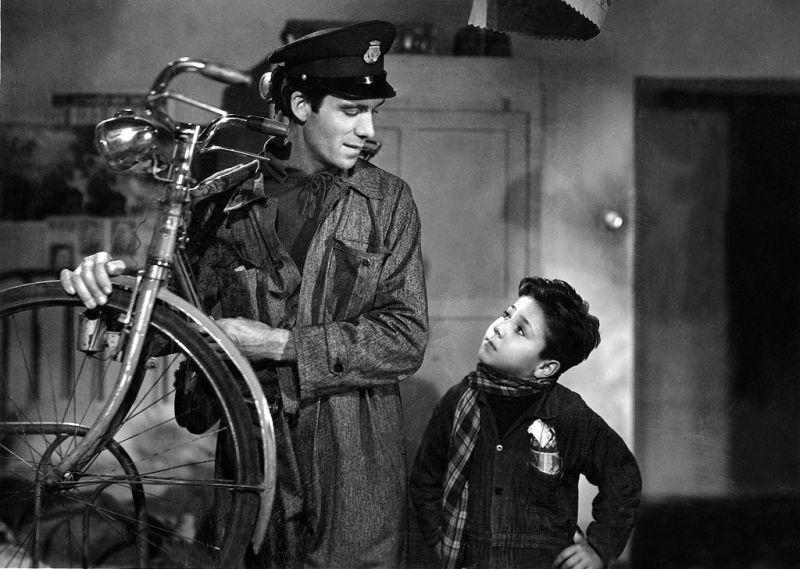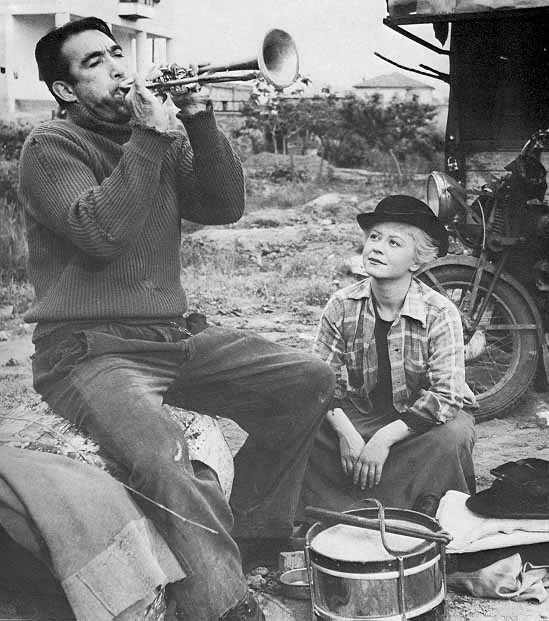9 Italian New-Realism Film
Learning Objectives
- Learn about the historical events leading up to the New-Realism era of Italian Film
- Understand the techniques used by Italian filmmakers, as well as the general themes behind their films
- Learn about some of the most influential directors of the New-Realism era
Italian New-Realism: The Working Class and World War II
Italian neorealism was a style connected to the working classes of Italy. It was characterized by realistic storylines in sharp contrast to contrived American melodrama. The lighting was harsh, and the filming was mostly in black and white. Italy was a poor country after the war and these films reflected the country’s lack of resources. The acting style was vibrant and denoted reactions taken in a single take. These were films that clearly described post war life characterized by stories set amongst the poor and working class. These films were made largely outdoors and many described conditions in Italy immediately after World War Two. Strong women dominated these films. The films embraced a naturalistic view of everyday life with Italy’s national pain and character featured prominently. The films were usually filmed on location, frequently using nonprofessional actors. Italians in this period were emotionally scarred by the war and psychologically, the films show desperate and depressed people.
Italy was in very difficult position following the Second World War. The country spent half the war as an ally of the Axis powers until Dictator Mussolini. When the gravity of the war was at its height, a mob dragged Mussolini out and killed him, and the new government embraced the allies and the war against Hitler. The allies didn’t know what to do with Italy following the war, and the country had trouble establishing a stable government, law and order and a civil code of behavior.
Prior to neorealism, there was a period of glossy, conventional melodramas that were not very political or related to the real life conditions of Italians. This was Mussolini’s answer to the world situation. Turn it off and treat reality as if it does not exist. Mussolini did not want films that questioned reality or social or political ideas. The war and economic hardship in Italy set the stage for social realism in films following the war.
Key Takeaways
- Italian film’s sharp, realistic style contrasts that of the American melodrama
- The harsh lighting, long takes with minimal cuts, and black and white film seen in Italian film reflects the lack of resources during this era
- During Mussolini’s rule over Italy, Italian film had a period of conventional melodramas, much like that of American film.
- Italian New-Realism documents real life experiences during World War II
Italian New-Realism: Reflections of a War-Torn Italy
Roberto Rossellini’s, Rome Open City, was a harsh tragedy that revolved around Rome’s occupation by German troops at the end of the war. The film depicts the Germans being driven out of Western European strongholds. The film showed a freedom fighter working with the underground to undermine the German occupation. A main character was Pina, a widow raising a son and seeking a new relationship with Francisco, a young idealist committed to the freedom fighters and the underground. Tying the film together was the community priest who supported the underground freedom fighters but needed to feign neutrality to keep the church from being crushed and to serve as a guide to the young boys who needed moral guidance.


Stills of Maria Michi and Harry Feist in Rome Open City
Rossellini tested each character in the crucible of German rule. The Germans were near the end of their reign in Europe and were desperate and merciless in trying to put down the people and their rebellion. They bought off weak courtesans with whiskey and nylons. Most scenes were shot on the actual streets of Rome, and many parts of the city were still occupied by German troops when the film was shot. Rossellini was greeted as a patriot and hero for his filming.
Rossellini filmed most scenes in intense and disturbing close-ups bringing the audience into the action. When Pina (Anna Magnana) learns her boyfriend Francesco had been picked up by the German police, she tried to rescue him and was shot and killed by the Germans. When the Germans found the freedom fighter they tortured him for hours. Rossellini lingered over the details and showed the torture scenes (with a blow torch) in detail and focused on suffering and the face of the dying man. Finally, when the priest sees his dead body, he cracks and berates the Germans. They took him to a field to shoot him, but the Italian troops were afraid to kill a priest and shot at the ground.
The film brutally described German repression and Rossellini’s intense graphic black and white cinematography evoked the reality of the desperate Italian people, the film was named a landmark example of a new Italian cinema Ladri di Bicicleta (1948).

The Bicycle Thieves
Victorio De Sicca’s 1948 realist work, The Bicycle Thieves, portrayed a young boy and his indigent father who are reduced to stealing bicycles for a living. De Sicca uses on the street realism shooting in the dank and burned-out ruins of war-torn Italy. The actors are mostly real people and non-professional actors.
The story is a mythic quest where a father and son hunt for a bicycle. It is a rough parody of the grail quest, because for the duo, the bicycle means everything. The father needs the bicycle to go to work every day to hang posters on the walls. Without it he cannot work, he cannot earn money, and he cannot provide for his son. The son is faithful and wants his father to succeed. The father hunts fruitlessly through the decimated streets of Rome in vain for his stolen bicycle. Not only do they want the bicycle back, they want to stop the thieves who are ruining people’s lives. The fruitless search adds to the desperation of their mission, and the ravaged city landscape makes the film look like some sort of post-apocalyptic fantasy, only this time the apocalypse was real.
De Sicca obtains beautiful, blended performances from the non-professional actors playing the boy and his father. To add to the metaphor of the journey or quest, the bike company is called Fides (faith in English). The boy and man are in some way on a sacred quest. While there are themes of social isolation and loneliness amongst the suffering Romans, the film is larger than a simple social tract. These characters are waging war against divine forces. By the film’s end, the father is reduced to stealing a bicycle, but again his transgression is almost like a Greek fable, and his fall depicts a tragic descent through loss of faith. The Bicycle Thieves is a tragic ride through the depths of post war depression and portrays a descent of common people into a mythic underworld.

The Road
Federico Fellini practiced a form of realism that was offset by his interest in surrealism and fantasy. Fellini was a screenwriter for Roberto Rossellini and began directing in the early fifties, often from his own scripts. In 1954 he developed a script about the circus and characters existing in that world titled, The Road. He cast his wife, Giulietta Masina, as a young orphaned silent comedian. She meets a new recruit, a circus strong man, Zampano, played by Anthony Quinn. The pair strike up a partnership and the exotic world of the circus and its freaks and eccentric personalities counter the hard life of the performers living on the road.
Unlike De Sicca and Rossellini’s neo realism, Fellini’s scenario is tinged with a tenderness of youth and remembrance. Fellini worked hard and long on the film, at one point arriving at a nervous breakdown. Many attacked the film, but it arrived as one of the greatest films of the century, supported by Masina’s brilliant performance as the winsome Gelsomina. Her adventures with Zampano become more depressing as Zampano proves to be a soulless and cruel partner. Eventually, Zampano kills a man and abandons Gelsomina. He later learned of her death.
The film reflects Italian society on the run and disoriented, searching for a direction. The film also has an atmospheric character that reflects both realistic characters in a raw and joyless life, but also mythic characters, like Narcissus and Echo. Zampano only is out for himself and wants to be the star. He is a Narcissus character, and Gelsomina is his echo and reflection. Her departure and death became the destruction of Zampano.
Key Takeaways
- Roberto Rossellini’s, Rome Open City, was shot in the midst of German occupation in Italy. He used close-up shots and lingered over violence in scenes to depict the desperate state of Italians during this time.
- Victorio De Sica’s, The Bicycle Thieves, reflects the wavering faith of Italians amidst extreme hardship
- Federico Fellini represents Italy’s sense of confusion and search for new direction amidst a war-torn country in his film, The Road.
Reading Comprehension
- How was the state of the Italian working class reflected in Italian New-Realism films?
- What impact did World War II have on the psychology of Italians, and how is this portrayed in the films, Rome Open City, The Bicycle Thieves, and The Road?
- What are the characteristics of the Italian New-Realism style of film?
Terms
Neo-realism: Neo realism erupted after World War two as an Italian style that wanted to proclaim the truth about the world. The cinematography was glaring black and white and the actors practiced a serious form of direct confrontational acting and strong realistic storylines with actors often improving dialogue.
Surrealism: A form of film derived from surrealist theories that posts the strange and unusual particularly as various dream or psychological states.
Film diretto da Roberto Rossellini e prodotto da Excelsa Film, Public domain, via Wikimedia Commons
Film diretto da Roberto Rossellini e prodotto da Excelsa Film, Public domain, via Wikimedia Commons
Victorio De Sica, Public domain, via Wikimedia Commons
Federico Fellini (director), Ponti-De Laurentiis (production), Public domain, via Wikimedia Commons
Films:
Rossellini, Roberto: Rome, Open City (1945)
De Sica: The Bicycle Thieves (1948)
Felini, Federico: La Strada (1954

